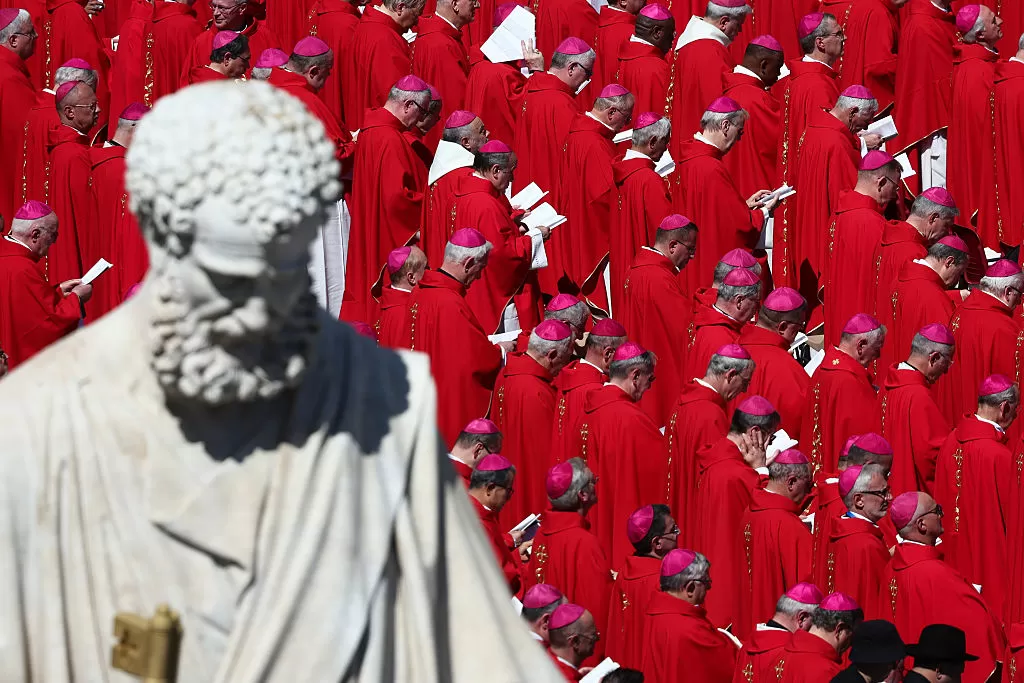The next papal conclave is just around the corner, set to begin on May 7. This highly anticipated event, steeped in tradition and secrecy, will determine the next leader of the Catholic Church. For those unfamiliar with the process, here’s what you need to know about this notoriously private event.
First and foremost, what exactly is a papal conclave? In short, it is a gathering of the College of Cardinals, the highest-ranking officials of the Catholic Church, to elect a new pope. This process has been in place for centuries and has evolved over time to ensure a fair and impartial selection of the next pontiff.
The conclave will take place in the Sistine Chapel, a place known for its breathtaking frescoes by Michelangelo. The cardinals will be sequestered within the chapel until a new pope is elected, with no contact with the outside world. This isolation is meant to allow the cardinals to focus solely on the task at hand and to prevent any outside influences from affecting their decision.
The conclave begins with a Mass, known as the “Pro Eligendo Romano Pontifice,” or “For the Election of the Roman Pontiff.” During this Mass, the cardinals will pray for guidance and wisdom in their decision-making process. After the Mass, the cardinals will take an oath of secrecy, promising to maintain the utmost confidentiality throughout the conclave.
Once the conclave officially begins, the cardinals will cast their votes in a series of ballots. In order for a cardinal to be elected as the new pope, they must receive a two-thirds majority vote. If no candidate receives the required number of votes, the ballots will be burned in a special stove, with the smoke signaling to the world whether a new pope has been elected. Black smoke indicates that no decision has been made, while white smoke signifies that a new pope has been chosen.
The conclave can last anywhere from a few days to several weeks, depending on how long it takes for a candidate to receive the necessary votes. During this time, the cardinals will continue to vote and deliberate until a new pope is elected. Once a candidate receives the required number of votes, they will be asked if they accept the position. If they do, they will be asked to choose a papal name and will then be officially announced to the world as the new pope.
The papal conclave is a highly secretive event, with strict rules in place to ensure the privacy and integrity of the process. However, in recent years, there have been some changes to make the conclave more transparent. In 2013, Pope Benedict XVI issued a decree allowing for the possibility of an earlier start date for the conclave, in order to accommodate those who may need to travel from far distances. This change also allows for a longer period of time for the cardinals to meet and discuss potential candidates before the official start of the conclave.
Another change that has been implemented is the use of electronic voting machines. In the past, the cardinals would write their votes on paper ballots, which were then counted by hand. This new technology allows for a more efficient and accurate counting process, reducing the chances of any errors or discrepancies.
The upcoming papal conclave is highly anticipated, as it will determine the future direction of the Catholic Church. With over 1.2 billion followers worldwide, the pope holds a significant influence and responsibility in the lives of many. The conclave is a time for prayer, reflection, and discernment, as the cardinals seek to choose a leader who will guide the Church with wisdom and grace.
In conclusion, the papal conclave is a sacred and time-honored tradition that holds great significance for the Catholic Church and the world. As we await the start of this historic event, let us keep the cardinals in our thoughts and prayers as they embark on the important task of electing the next leader of the Church. May the Holy Spirit guide them in their decision and may the new pope be a source of inspiration and hope for all.


